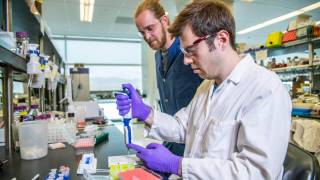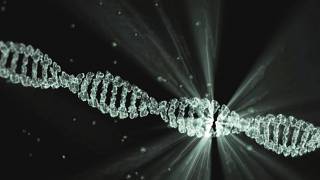Herpes Vaccine Candidate HSV529 Reports Positive Phase 1 Results

A phase 1 clinical study of a herpes simplex virus 2 (HSV-2) vaccine candidate reported positive results on May 6, 2019.
This first-in-human study of the replication-defective vaccine, HSV529, in 69 participants reported the vaccine candidate was safe and elicited neutralizing antibody and modest CD4+ T-cell responses in HSV seronegative vaccinees.
The herpes vaccine, HSV529, is derived from HSV2 strain 186, was produced in Vero cells expressing HSV2 UL5 and UL29 and is manufactured by Sanofi Pasteur.
This is good news for 2 reasons; herpes simplex virus 2 causes genital herpes in over 400 million persons worldwide, and there is not an HSV-2 vaccine commercially available today.
>>> Confidential Herpes Test <<<
The National Institute of Allergy and Infectious Diseases (NIAID) co-sponsored study was published in The Journal of Infectious Diseases and reported:
- 89 percent of vaccinees experienced mild to moderate solicited injection site reactions compared with 47 percent of placebo recipients
- 64 percent of vaccinees experienced systemic reactions compared with 53 percent of placebo recipients
- 78 percent of HSV1 /HSV2 vaccine recipients had a greater than 4-fold rises in neutralizing antibody titer after 3 doses of vaccine, whereas none of the participants in the other serogroups had such responses
- HSV2-specific CD4+ T-cell responses were detected in 36% 46%, and 27%, of HSV1 /HSV2 , HSV1 /HSV2 , and HSV1 /HSV2 participants, respectively, 1 month after the 3rd dose of vaccine
- CD8+ T-cell responses were detected in 14%, 8%, and 18% of participants in each group, respectively
Herpes is a common sexually transmitted disease (STD) that any sexually active person can acquire. Most people with the virus don’t have symptoms, says the Centers for Disease Control and Prevention (CDC).
It is important to know that even without signs of disease, it can still spread to sexual partners. You can get herpes by having vaginal, anal, or oral sex with someone who has the disease.
Fluids found in a herpes sore carry the virus, and contact with those fluids can cause infection.
You can also get herpes from an infected sex partner who does not have a visible sore or who may not know that he or she is infected, because the virus can be released through your skin and spread the infection to your sex partner.
Genital herpes is common in the United States, as about one out of every six people aged 14 to 49 years has genital herpes, says the CDC.
Recent herpes vaccine news:
Correspondence: Lesia K. Dropulic, MD, Laboratory of Infectious Diseases, National Institutes of Health, National Institute of Allergy and Infectious Diseases, Bethesda, MD 20892
Our Trust Standards: Medical Advisory Committee
- A Randomized, Double-Blind, Placebo-Controlled, Phase 1 Study of a Replication-Defective Herpes Simplex Virus 2 Vaccine, HSV529
- Study of the Safety of a Particular Herpes Vaccine in Adults With or Without Herpes Infection
- A Replication-Defective Herpes Simplex Virus (HSV)-2 Vaccine, HSV529, is Safe and Well-Tolerated in Adults with or without HSV

























